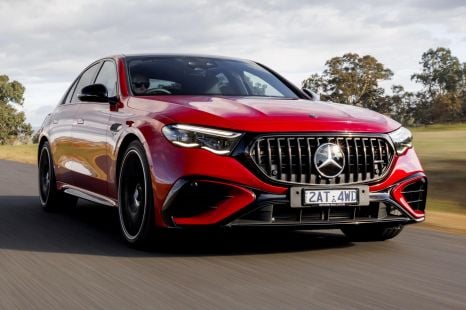

Max Davies
5 Days Ago

News Editor
Audi’s mid-life update for the e-tron SUV brings not only more power and range, but also a new name.
The 2023 Audi Q8 e-tron will arrive in Australia within six months of its European launch, which indicates a local launch around the middle of next year.
The e-tron and e-tron S become the Q8 e-tron and SQ8 e-tron, aligning them with the combustion-powered Q8 and SQ8.
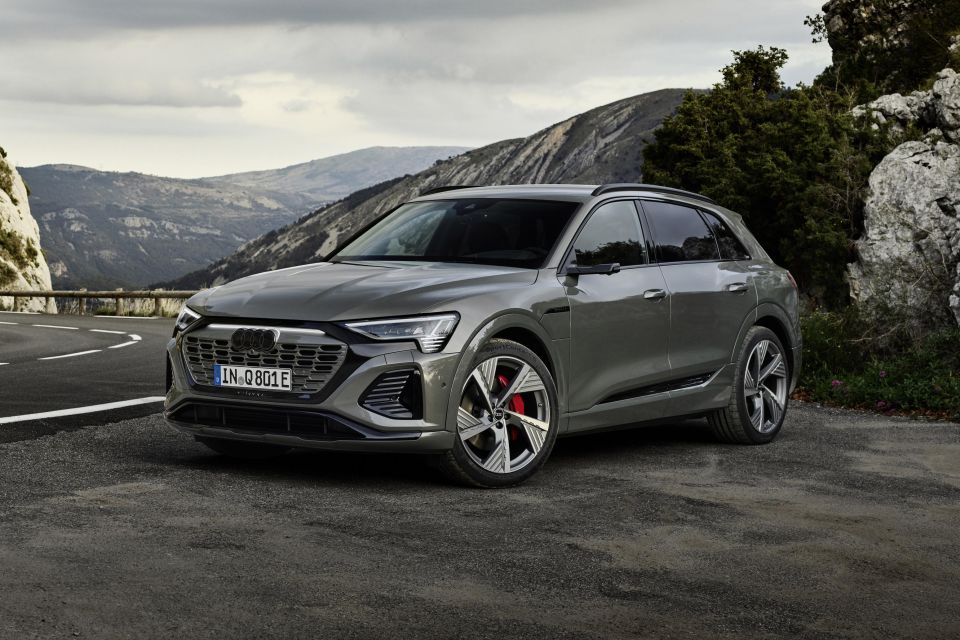
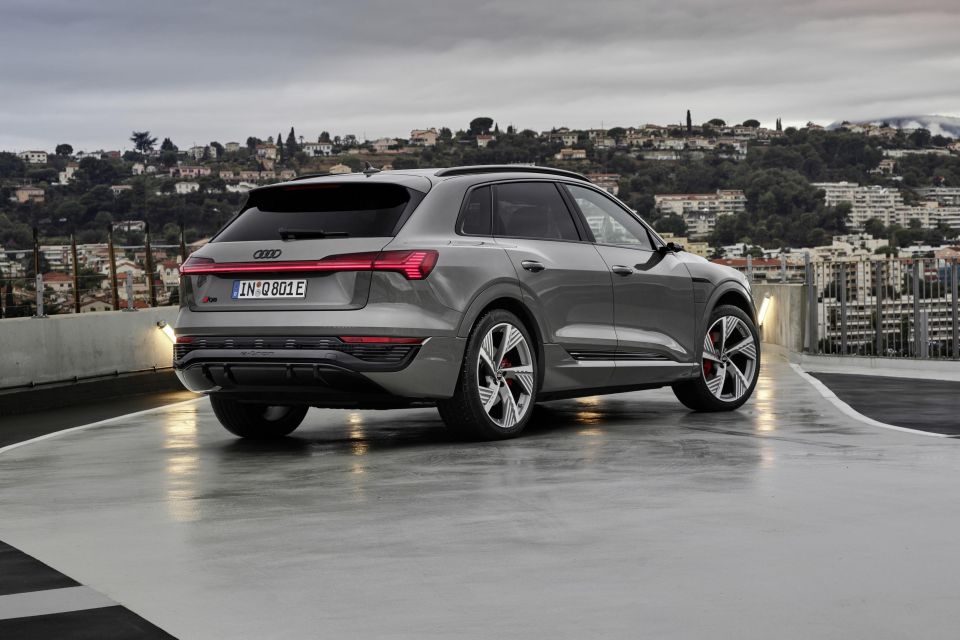
Along with the nip-and-tuck and new name comes a healthy bump in range.
The smaller 71kWh battery is gone, with the base Q8 e-tron 50 packing a 95kWh nickel-manganese-cobalt (NMC) battery, and the 55 and SQ8 e-tron getting a new 114kWh nickel-cobalt-aluminium (NCA) battery.
Including the associated structure and cooling, the base battery weighs 704kg while the new flagship battery weighs 728kg – though Audi has shaved some weight from elsewhere in the Q8 e-tron, including a 7kg saving from switching to a new underbody material.
Range has been increased by up to 30 per cent on the Q8 e-tron 55 and SQ8 e-tron, and by 40 per cent on the base 50.

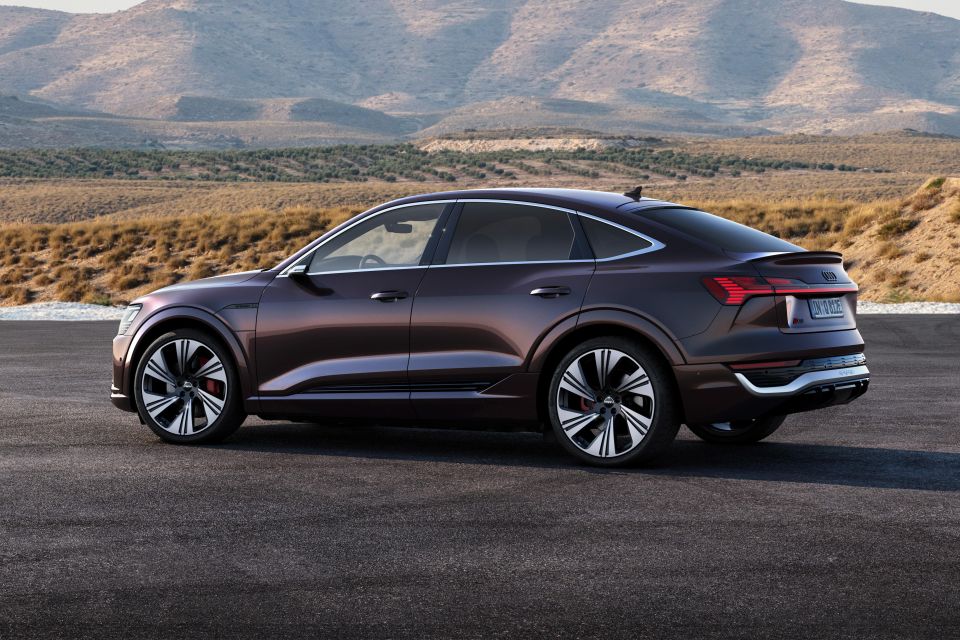
On the stricter WLTP test cycle, the 50 now has 491km of range or 505km in the Sportback, up from 336km in the outgoing model.
The 55 and 55 Sportback now have 582km and 600km of range, and SQ8 models have 494km and 513km in the wagon and Sportback, respectively.
The base 50 also gets an extra 20kW of power, for 250kW (in boost mode) and an unchanged 664Nm of torque. The 0-100km/h time has been slashed from 6.8 seconds to 6.0 seconds.
DC charging speeds have also been improved, from 120kW to 150kW on the 50 and from 150kW to 170kW on the others.
The larger of the two batteries can be charged from 10 to 80 per cent in 31 minutes.
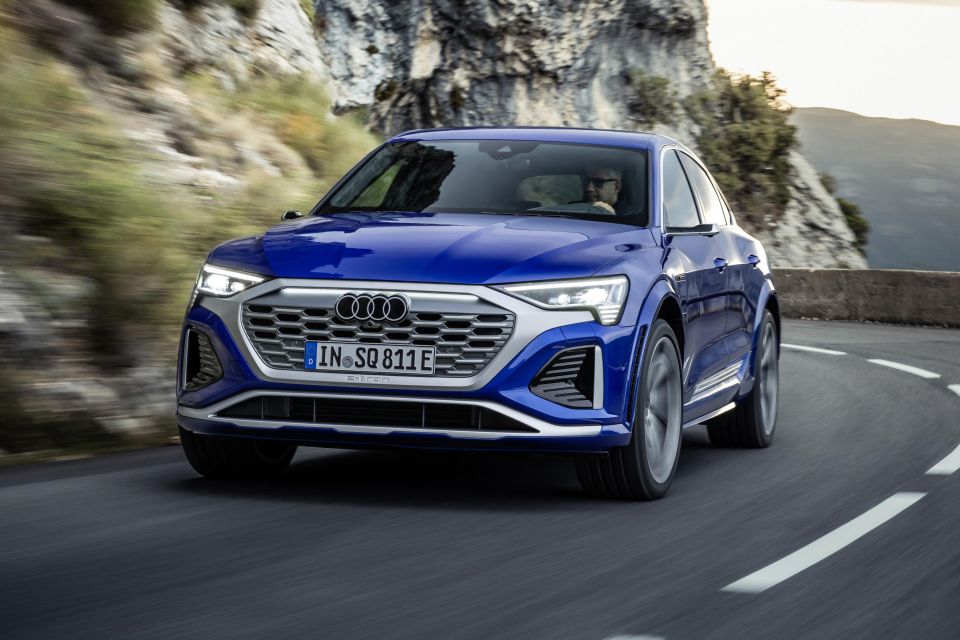
All Q8 e-tron models can be charged at up to 11kW using AC charging, though Audi also offers an optional AC charging of up to 22kW.
The Q8 e-tron features a revised rear electric motor, a new gear ratio for the steering for greater responsiveness, tweaked chassis control systems, and new axle kinematics, with Audi executives saying they were going for a more sporty feel for the update.
All models have standard air suspension, with the SQ8 getting a specific tune – though it doesn’t have any different propulsion sounds, with Audi saying it tries “not to do too much with unnatural sounds”.
Newly available is Remote Park Assist Plus, which allows you to control the vehicle’s parking via the myAudi smartphone app.


There’s revised front- and rear-end styling, with subtle tweaks to the bumpers, lights and grille, as well as new optimised aerodynamic wheel designs.
The most prominent change is an LED daytime running light strip running atop the grille, which highlights the shape of the four-ring logo. This is likely to filter to other Audi models.
The variant name is also laser engraved onto the B-pillars.
Though the cosmetic tweaks are minor, Audi says it’s been able to reduce the Q8 e-tron’s drag coefficient from 0.26 to 0.24 in the Sportback and from 0.28 to 0.27 in the wagon.
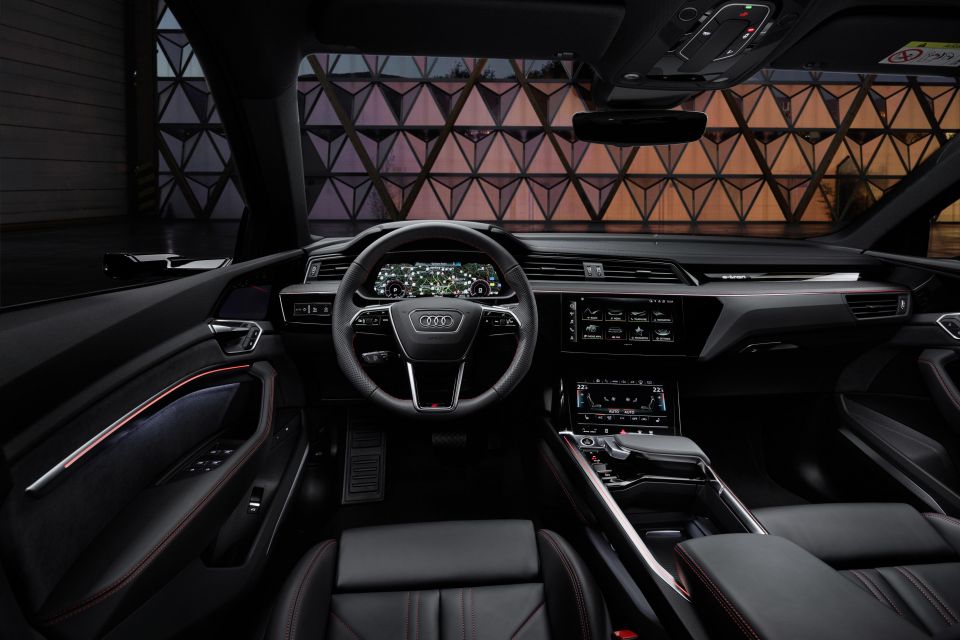
Front axle wheel spoilers have been enlarged, while the Sportback now has them on the rear wheels as well (though not on the front in the SQ8).
Optional matrix LED headlights now project orientation lights onto the road to mark the car’s position in the lane, including on country roads.
The interior receives detail changes, like different inlays and trim including a new light brown walnut wood, a “sustainable technical material” made partially from recycled PET bottles, and an available red stitching package.
The dash layout, with its 10.1- and 8.6-inch displays in the centre stack, is unchanged.


Audi concedes the old e-tron nameplate had become confusing as e-tron-branded models proliferated through the line-up.
It says the Q8 prefix shouldn’t confuse customers as research it has conducted shows buyers will understand the Q8 and Q8 e-tron are two different vehicles.
With the Q8 badge carrying prestige, however, some of that magic should theoretically be sprinkled onto the electric SUV. Audi executives also hinted the next combustion-powered Q8 could wear a different name.
“The Q8 combustion engine [model] will keep the name, and maybe when there is a new model, that may change,” said e-tron product manager Carter Balkcom.
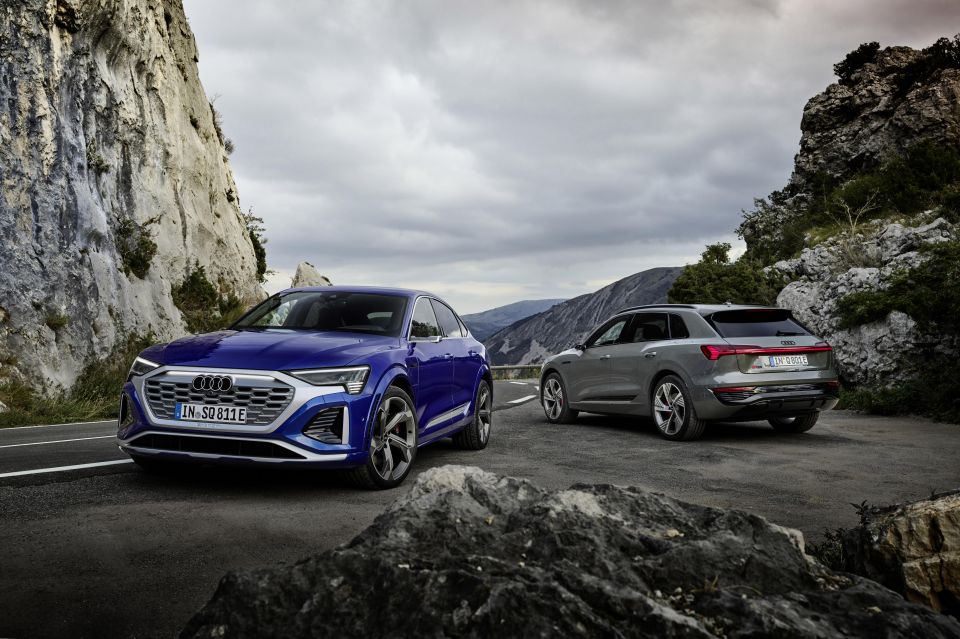
While the e-tron GT’s halo status will see it keep its name, the erstwhile e-tron gets the Q8 prefix to align it not only with the combustion-powered Q8, but to place it above the small Q4 e-tron and upcoming mid-sized Q6 e-tron.
Audi also notes the higher a model’s number, the standard of materials found in the cabin and the list of standard equipment are typically higher – which points to the upcoming PPE-based Q6 e-tron as being somewhat less premium inside.
Audi says the current Q8 e-tron will “run for a few more years” yet, with earlier reports suggesting a new generation could be launched in 2026.
The combustion-powered Q8 is also due for replacement that year, and will be the last new combustion-powered Audi.

Though almost every automaker is grappling with supply hurdles – Audi being no exception – it says the outgoing e-tron has been largely sheltered from these issues. It also says it doesn’t see any issues at present that will delay the model’s rollout.
Audi says there are currently no plans to introduce an RSQ8 e-tron during this generation.
“At this point, we don’t see first of all the need for an RSQ8. We have an S model… which has a lot of the traits that you often see on an RS model already in there, for example the S model already has the wide stance,” said Mr Balkcom.
“We [also] brought out the first three-motor battery electric that was offering this electric torque vectoring on the rear axle… And so for this platform that the Q8 e-tron is based on, we don’t have plans to bring an RS in that at the moment.”

Audi has sold 150,000 e-trons since introducing the electric SUV around four years ago.
It says around two-thirds of global e-tron volume has been of the wagon and a third consisting of Sportback models, though some markets show different preferences – Americans prefer the wagon, while in many European countries the preference is for the Sportback.
Take advantage of Australia's BIGGEST new car website to find a great deal on a Audi e-tron.
William Stopford is an automotive journalist based in Brisbane, Australia. William is a Business/Journalism graduate from the Queensland University of Technology who loves to travel, briefly lived in the US, and has a particular interest in the American car industry.


Max Davies
5 Days Ago
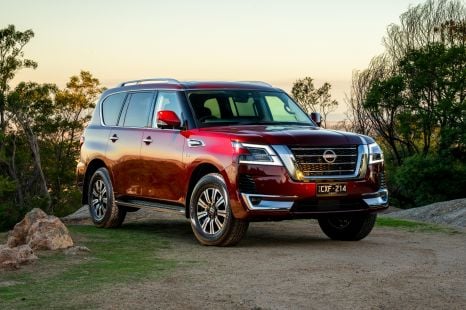

James Wong
4 Days Ago
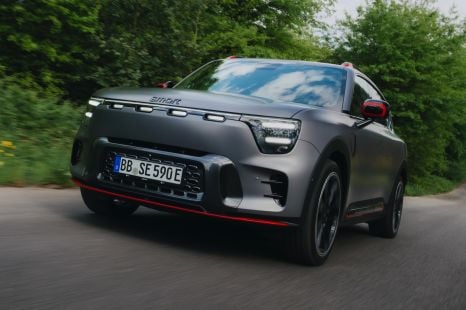

James Fossdyke
3 Days Ago


Gautam Sharma
2 Days Ago
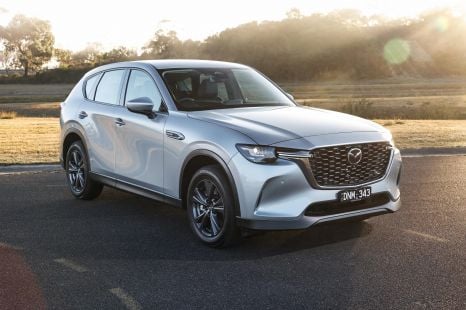

Josh Nevett
17 Hours Ago
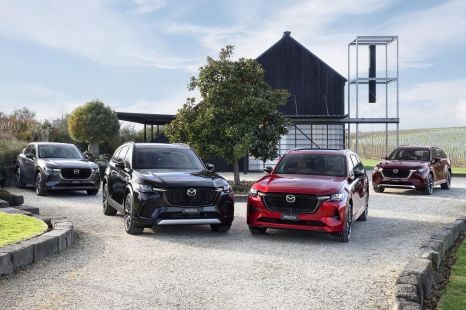

Max Davies
17 Hours Ago